For those of you who have been subscribers of the Tonic for some time now, you will be aware of the Rwandan yeast trials carried out earlier this year. For those of you who are new to this publication, I will link to previous articles if you need further context on the - yeast fermentation project - but for the purpose of this article, the Rwandan samples have landed and I need some help.
So that is why some of you are receiving this.
I would like to thank you all in advance.
Burts
No experiment worth its salt can be validated unless it is rigorously scrutinised and extensively peer-reviewed.
I have come to understand that sniffing away in my little lab, grading profusely, will - in no way, help me to confirm whether or not this experiment has had any impact.
In the job of looking at quality, my own bias is something I deal with on a regular basis. I have satisfactory methods to offset this, at times, but let’s face it, humans are vulnerable to a bit of influence. I have to admit I have some emotional attachment to this project and my desire to have this be a success is not very, let’s just say - Conducive to rigour.
So, I am putting a call out to the wider coffee community to lend me your tastebuds and your expertise.
In short…
I NEED THE HELP OF SOME EXPERIENCED CUPPERS!
Let me start from the beginning:
The thesis…
Coffee fermentation is wild.
Native yeast and bacteria are currently consuming Coffee pulp and in return, metabolising, multiplying and converting fuel into some very tasty brews.
Now, I am no microbiologist but the increasingly diverse range of flavour profiles that are being created through creative post-harvest processing mainly “anaerobic fermentation” as our industry has kindly coined it - is throwing up a whole microbial world of possibilities when it comes to creating interesting and often exotic flavour profiles.
The problem, as I see it, is that although this way of fermenting coffee is producing some great results it still relies heavily on the native yeast and microbes present in the environment to show up in force and be willing to join the party. Yes, submerging your coffee in water will create a more homogenous and anaerobic environment and potentially eliminate some of the spoilage organisms and bacteria from developing, causing quality issues (that is why washed coffee has become the preferred method of choice for most coffee producers who want uniformity in their quality ) but for the intended purpose of creating coffees with distinguished flavour profiles then surely a little more direct help will aid in repeatable results allowing production to be consistently reproduced year on year, leaving nothing up to chance.
Just imagine creating all of the expressive flavour profiles that the specialty coffee industry attaches so much value to in a controlled manner. One that is both scaleable and repeatable, and in turn produces coffee that has the maximum value-added, creating outstanding results consistently no matter what day the cherry arrives, what the weather is like and with relatively low investment.
Wouldn’t that be an ideal situation???
Coffee is not like wine…
But maybe it can learn from wine production.
The experiment.
In June of this year, I travelled to Rwanda to work with the team at Rwamatamu washing station and Omwani coffee company.
We carried out 3 very small trials using commercial yeast strains that have been developed specifically for post-harvest coffee processing.
Below is an overview of each of the processes:
Trial 1. Pulped & Submerged.
Freshly harvested cherries were delivered to the washing station and left overnight uncovered on tarps for 17 hours before processing started.
Hand-sorted and floated to remove defects.
Cherry was then pulped and placed straight into an airtight container fully submerged in clean potable water.
Yeast was rehydrated and added to the coffee pile and fermented for 24 hours with an average temperature of 20°C.
The parchment was then washed, sorted, and dried on raised beds for 16 days to a final moisture reading of 10.5%.
Trial 2. Pulped & Dry processed.
Freshly harvested cherries were delivered to the washing station and left overnight uncovered on tarps for 17 hours before processing started.
Hand-sorted and floated to remove defects.
Cherry was then pulped and placed into airtight containers with mucilage exposed. No water was added.
Yeast was rehydrated and added to the coffee pile and fermented for 24 hours with an average temperature of 20°C.
The parchment was then washed, sorted, and dried on raised beds for 16 days to a final moisture reading of 10.5%.
Trial 3. Cherry (Natural) Process.
Freshly harvested cherries were delivered to the washing station and left overnight uncovered on tarps for 17 hours before processing started.
Hand-sorted and floated to remove defects.
Cherry was placed directly into containers. No water was added.
Yeast was rehydrated and added to the coffee pile and fermented for 24 hours with an average temperature of 20°C.
The cherry was then transferred to drying beds and dried for 18 days to a moisture content of 11%.
The Objective
Terroir is a philosophy that I can buy into, I get it, I am prone to a large amount of romanticism myself, I do in fact believe that environmental conditions, cultural practices, and tradition play their part in producing outstanding coffee but let’s be real, AGRICULTURE IS TOUGH.
What I am really interested in is how ecological stewardship, tradition, crop husbandry, and culture can work alongside post-production processes (large and small) that allow producers to have more control over post-harvest fermentation methods that create outstanding results consistently. Surely there is a way that producers can implement some of the controlled post-harvest practices we see in the wine industry to develop sensory attributes that will in turn produce coffee with the maximum value addition for the specialty coffee sector.
The idea is to fully understand why the wine industry has adopted the use of commercial yeast over hundreds of years of refinement and potentially absorb some of these findings into coffee processing.
The Future
Without labouring the point, as the climate continues to rapidly change and become less predictable, the world is going to need to find creative ways of producing and processing the crops we rely on to sustain ourselves and our incomes.
The focus of the specialty coffee industry is driven by a certain kind of sensory quality that unfortunately the majority of us are not yet willing to pay the price for. I, like many of my peers in the specialty coffee industry, want to see producers rewarded for implementing quality practices that result in outstanding coffee but unfortunately, the resources needed to create a diverse portfolio of desirable coffee quality do not transcend across the whole coffee-growing landscape.
I believe that well-managed processing with the added benefit of using specifically designed yeast strains can produce net positives across a spectrum of systems that will make producing quality coffee in the future more reliable and achievable.
I am in no way saying that the use of commercial yeast is the silver bullet for the coffee industry and we need to make sure that any new processing technology is rigorously scrutinised before it is rolled out at scale, however, I have become increasingly aware that not knowing how your coffee will perform on the cupping table from year to year adds a level of anxiety that makes getting a good price for your coffee very difficult. I would like to see that change.
I also understand that some will not see the value in this but debate is good, there is a lot we can learn from further discussion around the important issues that the coffee industry is going to face over the next decade and I want to hear your views. I do however think.
It’s worth a shot.
If you are at all interested in cupping the samples and having a conversation then I would very much appreciate you getting in touch Via the email address below.
info@omwani.com
The idea is to compile a report from the findings over the next few months and then build a substantive report detailing the results.
This will include Quality evaluations and any production observations we have logged throughout the process.
Thank you for taking the time to read this article.
I look forward to hearing your views.
Cheers
Burts.
A little side note:
I am also working on a way that subscribers of the Tonic who are not experienced cuppers can also share in the tasting of these samples.
Keep an eye out for future articles as I work out a way of making this possible.
Drop me a message on Substack if you would like to try the samples so I can get an idea of the numbers.
I haven’t forgotten about you all, I promise.
Thanks for showing up.
Burts.
Further links:
Coffee is my morning wine…
I am currently sitting in transit at Addis Ababa Airport (Ethiopia) A solid 2 hours of sleep under my belt and I am on the hunt for caffeine. My eyes sting and I have a dull ache softly caressing the back of my left eye socket, I am putting this down to one too many glasses of Ethiopian Merlot on the flight, which surprisingly, was a
For the love of coffee.
This is a long one, apologies for the delay in posting, it has been quite the journey. This post will be better viewed in the app or on your browser.. Where do I start… I am home. I landed back in Blighty a couple of days ago. I am tired, transitioning, and still cleaning the dust from my body.





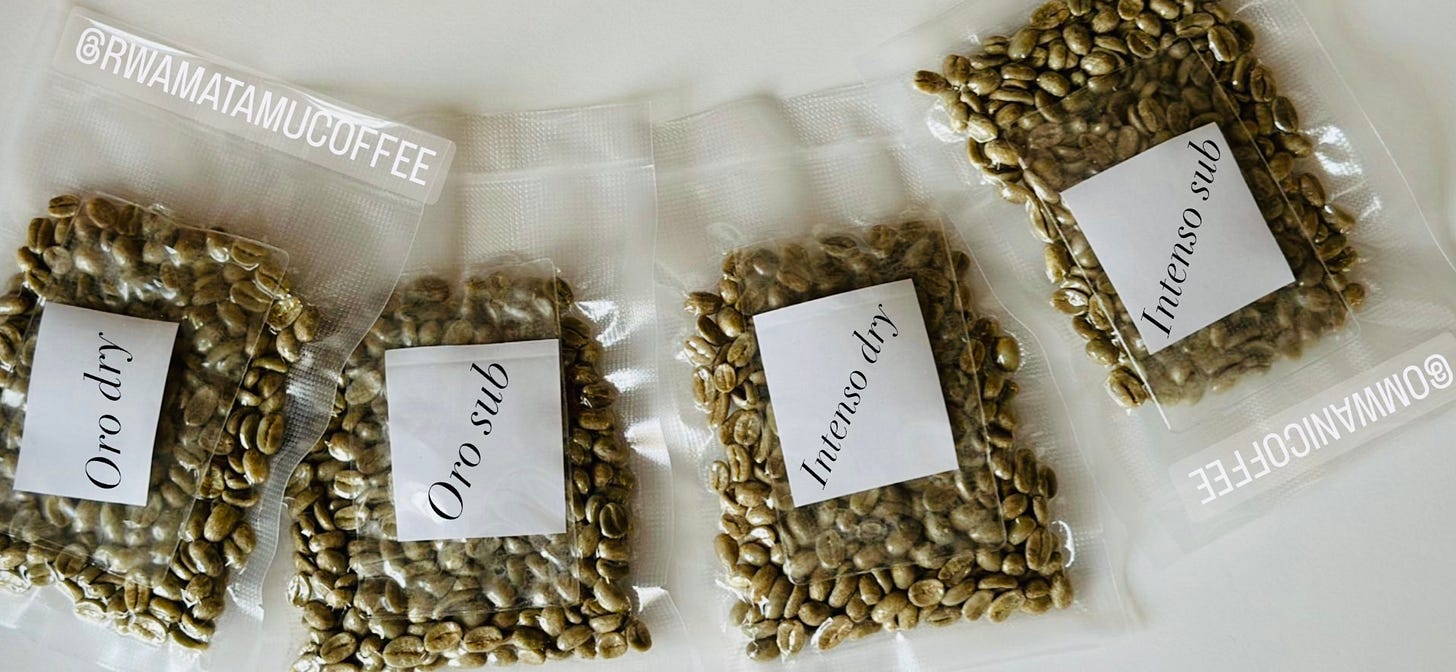
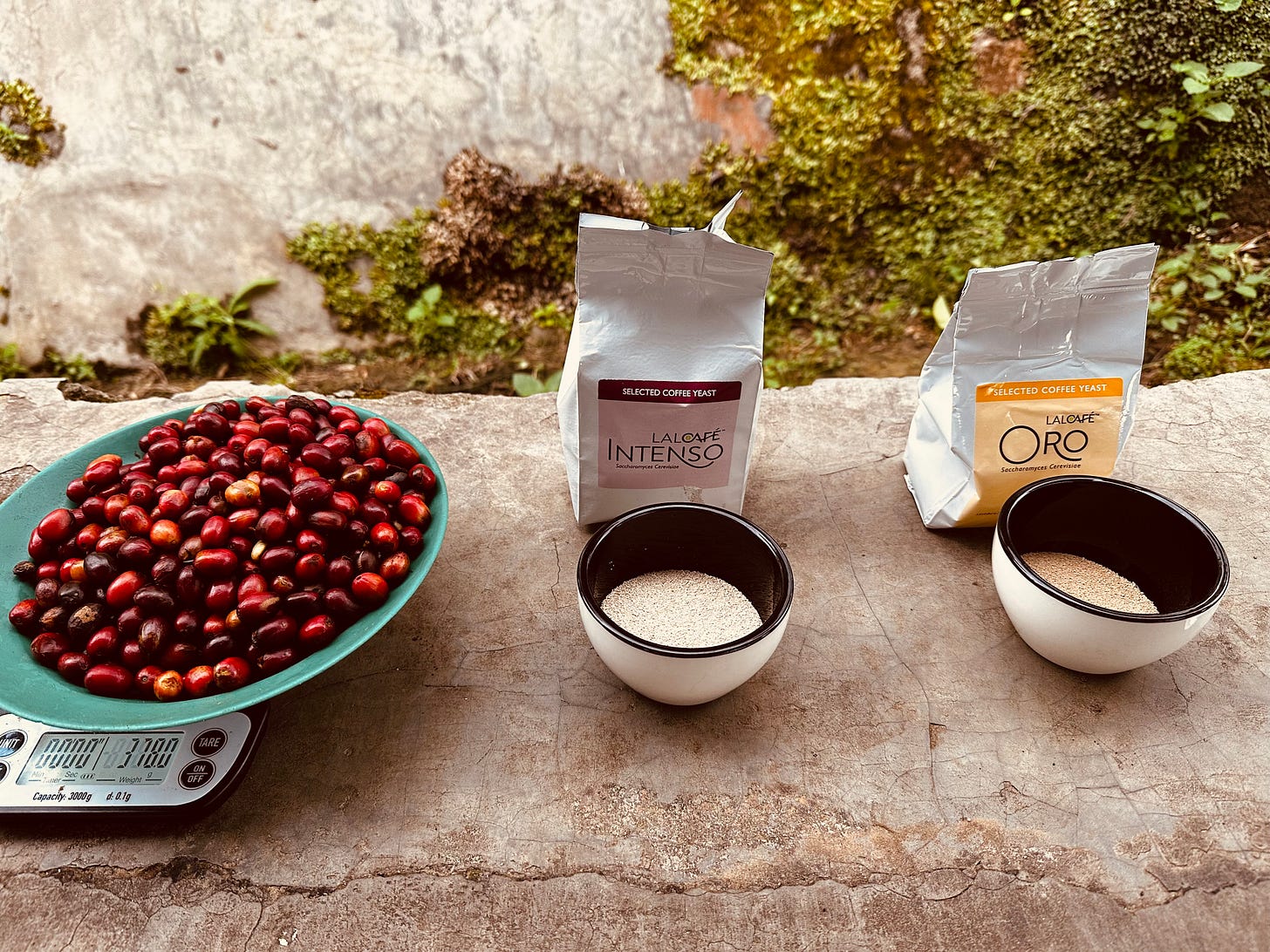
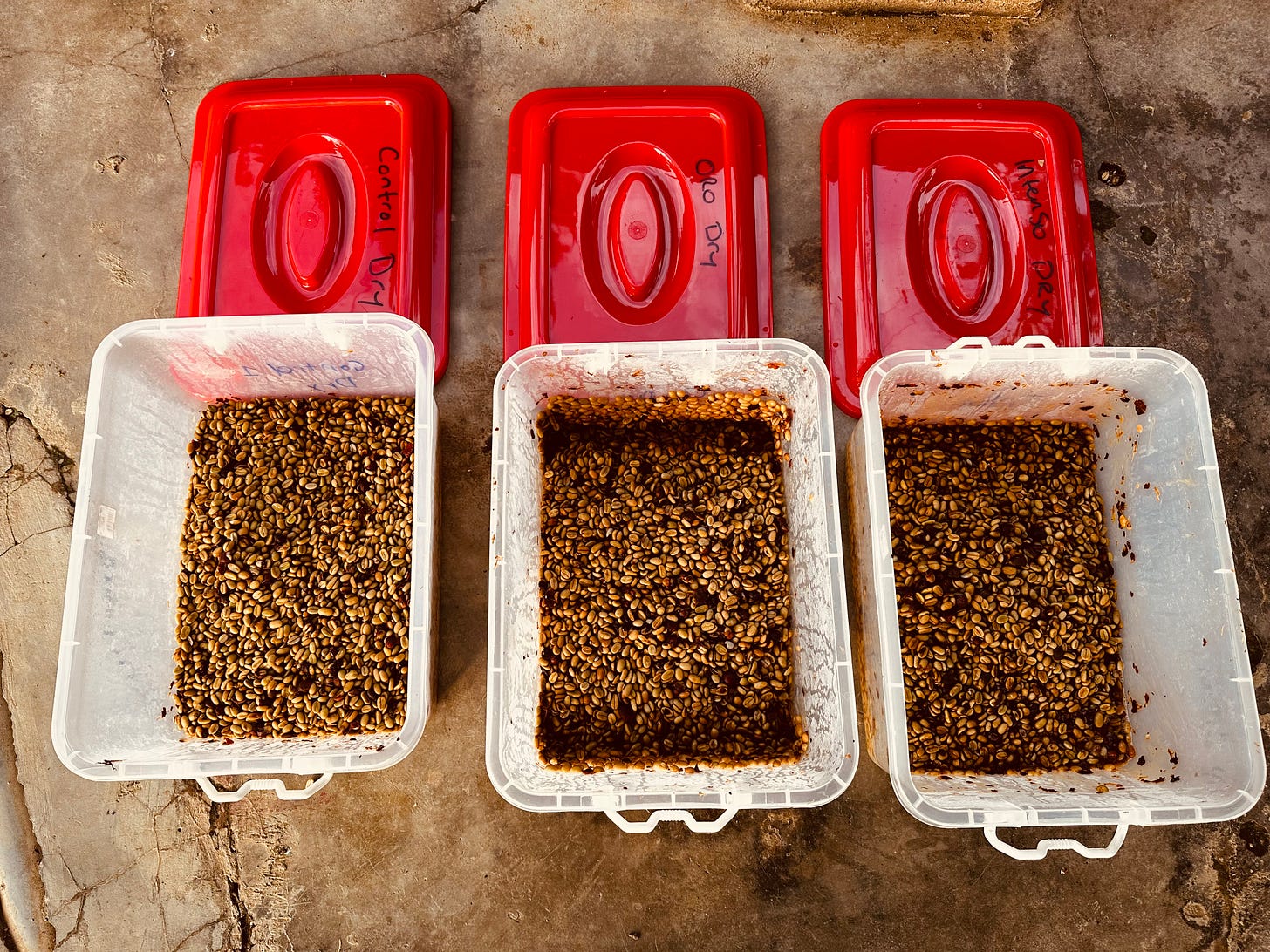
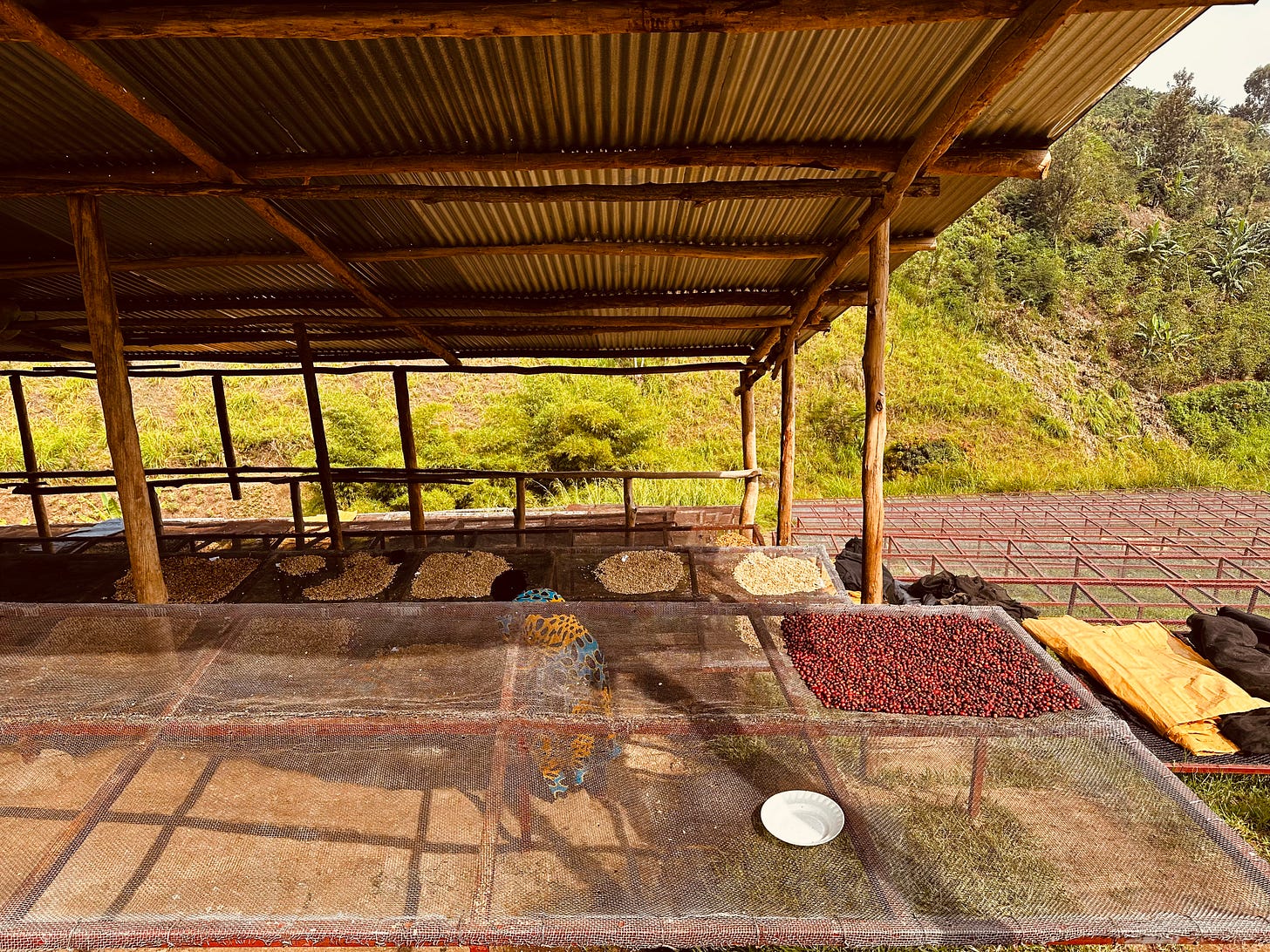
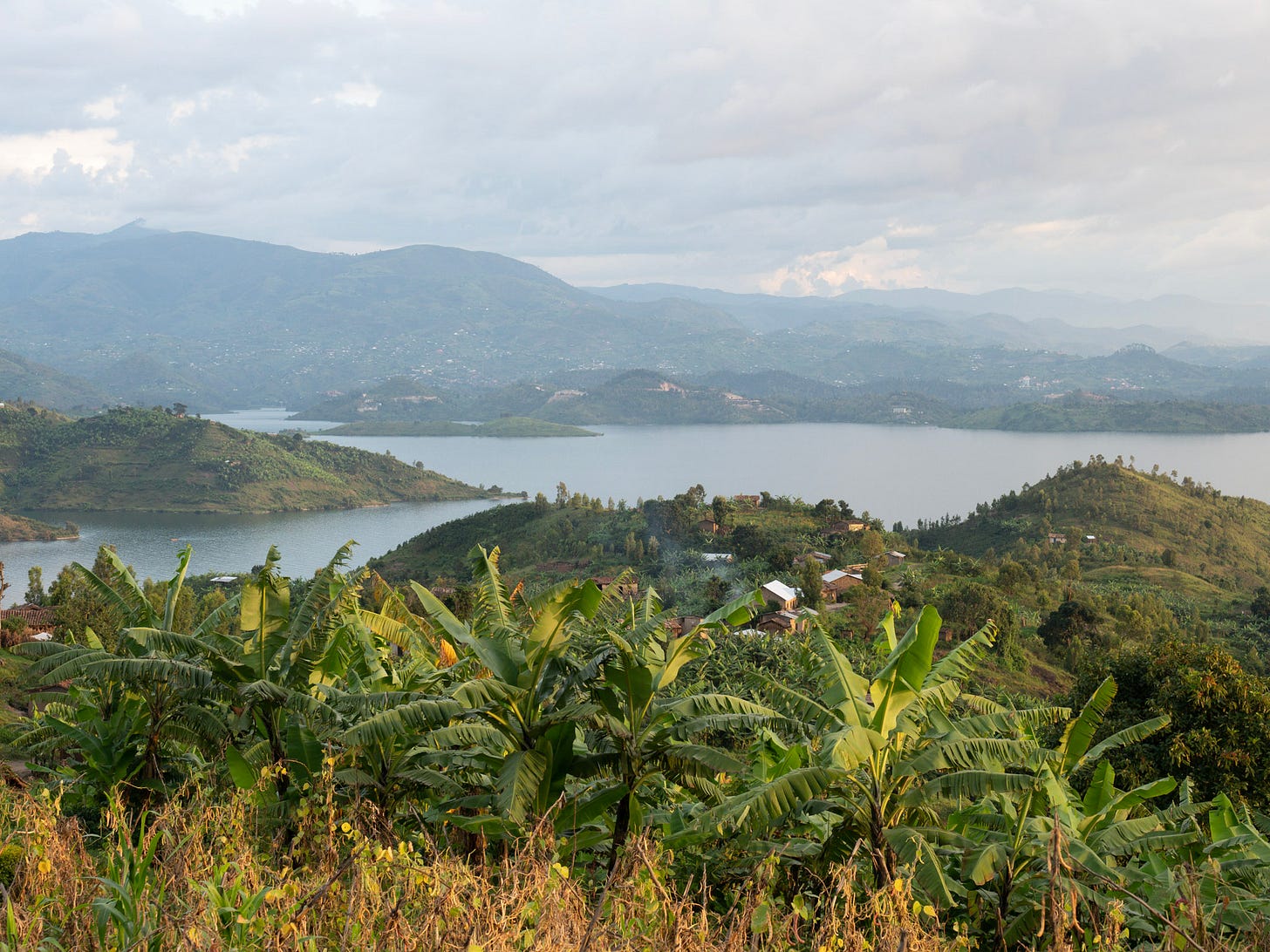


Excellent post as always. I'm honestly surprised that coffee isn't already being processed in this way, it seems like most agricultural products which rely on fermentation utilize some sort of cultivated strain of yeast, really the only one I can think of that doesn't is sourdough but in large scale production they have a saved mother.
Super excited to taste these coffees! It was a pleasure having you; we are so grateful for you making this experiment possible.